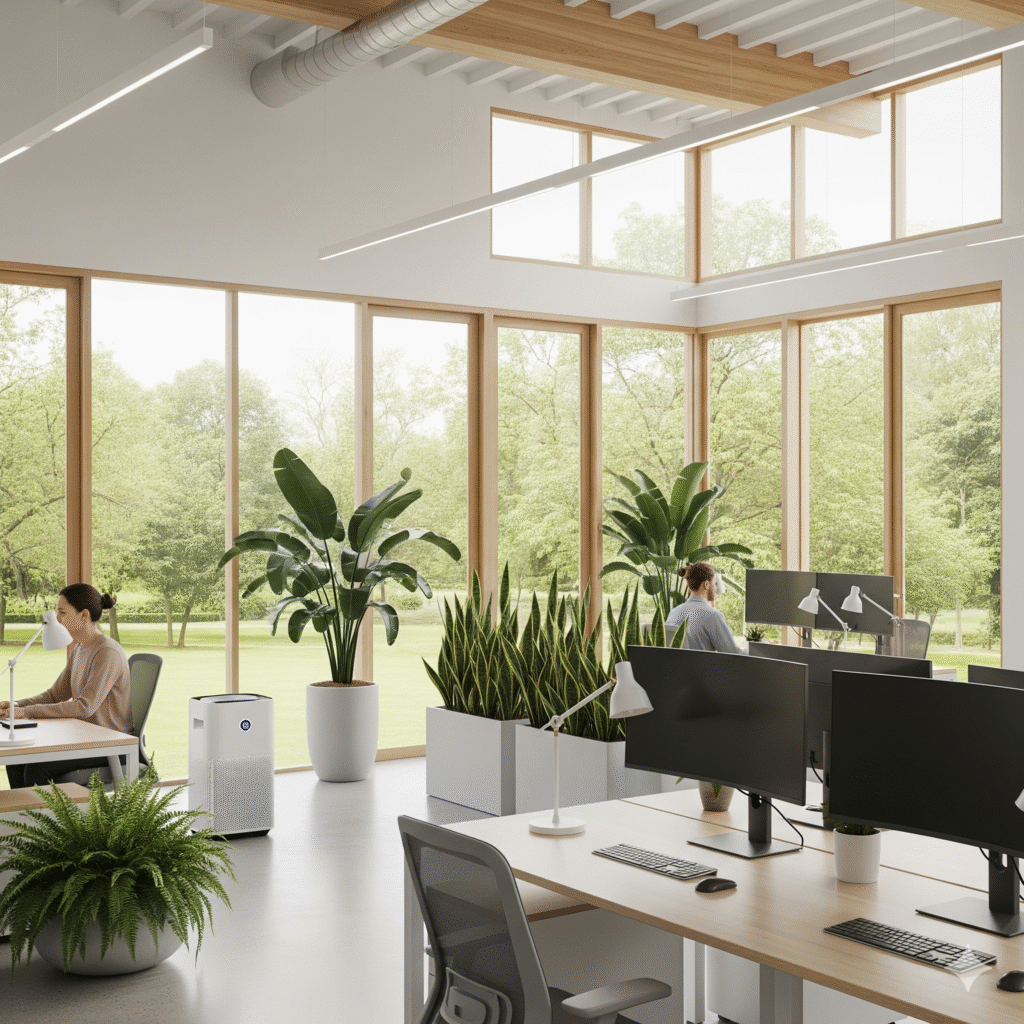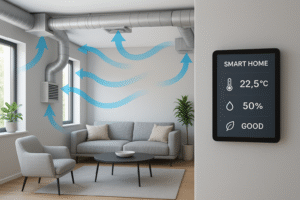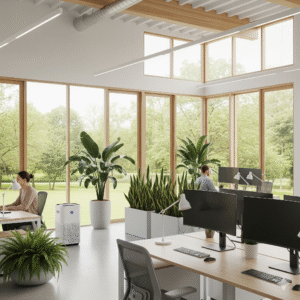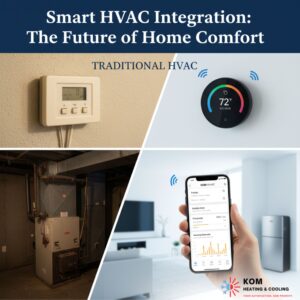For decades, the role of an HVAC system was simple: keep us warm in winter and cool in summer. But in today’s world, the definition of a high-performance building has evolved. It’s no longer just about comfort; it’s about creating an environment that actively promotes health, well-being, and productivity for the people inside.
This shift emphasizes a new, invisible yet vital factor: Indoor Air Quality (IAQ).
Poor IAQ, caused by pollutants, allergens, and inadequate ventilation, is linked to issues from headaches and fatigue to increased absenteeism, collectively called “sick building syndrome.” The solution lies within the building itself, in a modern, intelligently designed HVAC system.
Why IAQ Matters More Than Ever for Your Building
Investing in high-quality indoor air isn’t an expense; it’s an investment in performance and people. For building owners and facility managers, prioritizing IAQ offers tangible benefits:
- Enhanced Occupant Productivity: Research shows that clean, well-ventilated air can greatly boost cognitive functions, including concentration and strategic thinking.
- Reduced Absenteeism: Filtering airborne pathogens and allergens creates a healthier workforce with fewer sick days.
- Increased Tenant Satisfaction: In a competitive market, a healthy building is a key selling point. Tenants are demanding spaces that focus on their well-being, which leads to higher retention.
- Improved Property Value: Buildings with modern HVAC systems that provide high IAQ are more attractive to premium tenants and tend to have higher market values.
The 3 Pillars of Excellent IAQ
Achieving top-notch IAQ is a science that depends on three core HVAC functions working together:
- Ventilation: This involves bringing in fresh, clean air from outside to dilute indoor pollutants like CO2, VOCs (volatile organic compounds), and airborne particles. A powerful system ensures a steady, controlled exchange of air.
- Filtration: Removing harmful particles is essential. Modern HVAC systems utilize advanced filters (rated by MERV or HEPA standards) to trap dust, pollen, bacteria, and other microscopic contaminants before they enter occupied spaces.
- Humidity Control: Excess dampness can lead to mold and mildew, while too dry air can cause respiratory issues. A well-designed system maintains ideal humidity levels (typically between 30-50%) for both health and comfort.
The Technologies Behind Healthier Air
Achieving these pillars requires specialized equipment designed for high performance. This is where key HVAC components are crucial:
- Air Handling Units (AHUs): Think of the AHU as the lungs of the building. This centralized unit conditions, filters, and circulates air throughout the facility. A high-quality AHU is fundamental for an effective IAQ strategy, housing powerful fans, advanced filters, and coils for cooling and heating.
- Fan Coil Units (FCUs): FCUs provide flexible, localized air conditioning for smaller zones or individual rooms. They work alongside the central system to ensure every part of the building gets properly conditioned and filtered air, allowing precise temperature control without sacrificing overall air quality.
- Ecology Units: In environments with heavy pollutants, like commercial kitchens, ecology units are essential. These specialized systems are built for high-efficiency grease and smoke filtration, preventing contaminants from spreading and exhausting clean air outside.
Build for the Future with KOM HVAC
The future of commercial buildings is healthy, efficient, and human-centric. An advanced HVAC system is now a strategic asset that boosts your property’s value and enhances the performance of everyone inside.
At KOM HVAC, we deliver robust, high-performance units that form the foundation for superior indoor air quality.
Ready to create a healthier, more productive environment? Contact the experts at KOM HVAC today to explore a system designed for tomorrow.





